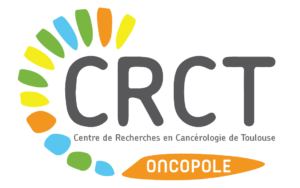At a time when e-health is an essential part of modern medicine, virtual slides have become a key element in histopathological diagnosis. Virtual microscopy consists in analyzing high-resolution digitally scanned histology images. The pathologist can observe these very high resolution scanned slides on a remote computer as he was using a microscope.
Convolutional Neural Networks (CNN) are a set of algorithms, modeled loosely after the human brain (several layers of neurones), that are designed to recognize patterns ( CNNs can learn from data and can be trained to recognize trends, classify data and predict future events).
Histopathological diagnosis of lymph node lesions is based on the interpretation of tissue sections (stained on glass slides). In some cases, the pathologist may face difficulties in interpreting major reactive changes that show simple lymphocyte stimulation, inflammatory reactions from tumor proliferations.
In this study, the images obtained by virtual microscopy were used to train a CNN (deep learning or deep-learning) to recognize microscopic images (follicular lymph node hyperplasia versus follicular lymphoma).
The results show that the CNNs have equivalent or better accuracy (99%) than pathologists to recognize images which are morphologically close but correspond to lesions etiologically and clinically distinct (benign vs malignant) .
However, this work points to two problems related to the use of neural networks in the analysis of microscopic images:
- reproducibility impacted by the preparation of tissue samples giving different images from one centre to another making the deployment of these techniques problematic at the moment .
- Machine learning, especially CNNs present strong obstacles such as the explainability of the decision made, a situation difficult to reconcile with industrial constraints related to general applications.
In the long term, the deployment of this technique will undoubtedly allow an improvement in pathological diagnosis as well as a precise quantification of tissue biomarkers in oncology by the possible creation of computer solutions (platforms or software) dedicated to medical decision support.
This project was carried out by Team 7 of the CRCT «biology of RNA in hematological cancers» and published in the npj digital medicine of May 2020. It is carried by the Labex TOUCAN, the Institut Carnot Lymphôme (CALYM), the IRIT, the Toulouse University Hospital and the Thalès Services group.
Discover publihed article :
NPJ Digit Med. 2020 May 1;3:63.
Accurate diagnosis of lymphoma on whole-slide histopathology images using deep learning.
Syrykh C, Abreu A, Amara N, Siegfried A, Maisongrosse V, Frenois FX, Martin L, Rossi C, Laurent C, Brousset P.
Key Word :
- Pathologie digitale,
- diagnostic microscopique,
- deep learning,
- cancer/lymphome
Contact :
Pierre Brousset
Team 7 – CRCT
pierre.brousset@inserm.fr
Une image :

Figure 1 : Supervised learning based on digital histological slides
LF: follicular lymphoma, HF: follicular hyperplasia, WSI (whole digital slide), CNN: network of deep neurons,


